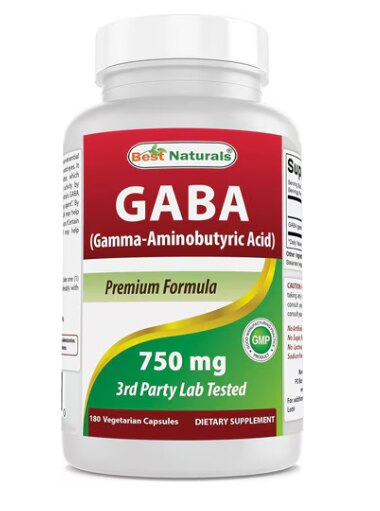According to Microsoft, the typical worker receives 117 emails a day and gets as little as two minutes between interruptions. Research also suggests that most of us are distracted by an average of 146 push notifications a day from our devices.
So it’s hardly surprising if you’re struggling to maintain mental clarity, and it may be time to activate “monk mode”. That means clearing away all distractions and taking control of your productivity. In a time of fragmented attention spans, monk mode is the deep focus hack that’s getting our creativity back.
Resetting your life to monk mode requires no robes, hood, or sandals, but certain supplements can enhance your retreat from the daily hubbub.
What is monk mode?
In simple terms, monk mode is a mental and physical reset in which you tune out all the distractions that are holding you back. This then gives you the head space to focus on the goals you’ve been meaning to target.
It’s an active, not a passive, process. Taking an afternoon nap doesn’t mean you’ve achieved monk mode, but designing a schedule that enhances your sleep cycle would qualify.
Think of a monk’s ascetic existence in a bare cell, wearing simple robes, leading a contemplative life stripped of stimulation or excess. For the monk, that self-denial and discipline allowed more time for religious reflection.
For today’s overwhelmed entrepreneur or thinker, on the other hand, activating monk mode frees up the mind to deliver big ideas. It certainly worked for Sir Isaac Newton, who took advantage of the 1665 plague lockdown to withdraw into his home and emerge later with the laws of gravity and the groundwork for calculus.
Monk mode is not…
- The same as mindfulness or meditation. Instead of clearing your mind, you’re focusing your thoughts.
- Although monk mode surged into popularity recently, Google Trends tracks searches for the term back to 2004.
- Exclusively male. Although popularized by “alpha male” influencers as the default setting for “high value” men, monk mode is accessible to anyone. As long as you’ve got too much on your plate, you have everything you need to try monk mode.
Where you’ve heard about it
Monk Mode hit its cultural peak around 2023, when TikTok feeds suddenly seemed to fill with creators championing deep work, discipline, and intentional living. Before it went fully mainstream, the idea surfaced among business and productivity influencers such as YouTube entrepreneur Iman Gadzhi, who helped popularise it as a personal development strategy.
Around the same time, author and actual monk Jay Shetty lent even greater credibility to the movement with the appropriately titled “Think Like A Monk“.
What are the benefits of monk mode?
Switching to monk mode helps extract creative clarity out of confusion and distraction. By dedicating mind space for active focus, you’re providing a clear path for thoughts to become goals.
By taking control of how your time is spent, you’re also reclaiming the trajectory of your day, and it’s never too early to start. The Centers for Disease Control and Prevention has published figures showing that half of teenagers are spending four or more hours on screens each day. In monk mode, aimless scrolling is forced to yield to learning with intent.
By rejecting instant gratification, monk mode also helps rewire the mind for long-term achievement. That’s a welcome self-confidence boost for anyone who’s frustrated at the pace of their progress. While many of today’s social media hacks insist on rapid results, monk mode says, “take your time and savor the process.”
How to enter monk mode
As mystical as it sounds, the outward appearance of monk mode is surprisingly familiar. Activities like sitting in silence or reading a book all fit within the gameplan. But the missing element is a goal, and monk mode must involve working towards an objective.
In the short term, entering monk mode starts with removing distractions:
- Seek isolation away from chatter or interruptions, emulating Trappist monks.
- Turn off devices or put them to sleep. Search online and you’ll find no shortage of monk tech, such as apps and blockers, to take all temptation away.
- Resist any stimulants, such as caffeine, tobacco or alcohol.
- Focus on forging a path to goals or milestones.
- Exercise to recharge energy levels, produce ‘feel good hormones’ and clear the mind.
The next phase is to go from monk lite to full monk, by turning daily habits into a lifestyle.
- Make daily focus, meditation, and exercise a non-negotiable part of your routine.
- Start de-cluttering your life in terms of “stuff”, choices, distractions and needs, essentially clawing your energy back from choice fatigue, passive consumption and mindless bingeing.
- Establish routines and rituals through rigorous self-discipline.
Although the “21 day theory” of habit formation is up for debate, monk mode can quickly become a natural state, and it doesn’t have to mean sacrificing all that is enjoyable in life. In fact, the dopamine detox you get from giving up relentless notifications and reminders can be a source of pleasure.
Studies have shown that it can take the mind as long as 23 minutes to regain focus after a distraction, so those first few sessions should come as a noticeable relief.
And if you’re not sure if you can commit fully to the life of a modern monk, try “intermittent monking”. That’s when you restrict yourself to sprints or phases of focused monk mode, whether one day a week or for a set period of time (usually as long as it takes to achieve a particular goal).
How to support monk mode with supplements
It’s easy to assume that mental focus and calm will come naturally once all distractions are removed, but certain nootropics and traditional herbs are worth including in your monk mode plan to assist the process.
L-Theanine
It’s bursting with the same amino acids that you’ll find in green tea. You can start the day with L-Theanine to support focused calm, or try it in the evening to prepare for relaxing sleep. †
Lion’s Mane
A functional mushroom that has been used for centuries to support mental focus and clarity. †
GABA
Found naturally in the brain, GABA helps calm neuron activity. As a result, it can be a useful supplement to help with winding down and blocking out distractions. †
If you’re exercising more while abstaining from regular stimulants, nutritional supplements can also bridge any energy gaps and ease the irritability or restlessness you might get when you forgo your usual morning coffee or soothing sundowner. Check below to browse our full range of supplements.
Monk mode in an AI world
At the time when monk mode was enjoying its first TikTok spotlight, the biggest threat to our attention spans and cognitive independence was social media. Since 2023, however, there’s a new source of concern: Artificial Intelligence (AI), tools like ChatGPT, and the temptation to outsource our thinking process entirely, whether it’s for a quick recipe or a full therapy session.
As Clare Evans, Productivity Coach and author of Time Management for Dummies, warns: “With the world of AI speeding things up, we need to focus on energy and capacity management as much as where we spend our time. Busyness doesn’t always mean productive. Strong, clear boundaries and the ability to switch will be needed as the world speeds up and there’s more to distract us.”
How we integrate AI into our daily lives may well determine the ultimate potential of monk mode. Concerns have already been raised about AI’s effect on cognitive function and critical thinking:
- A 2025 MIT Media Lab study found that continued LLM (large language model) use significantly reduced neural activity and recall.
- Average reading scores for high school students are at their lowest level for more than 30 years.
As a result, it’s quite possible that monk mode may throw us a future lifeline, coming to the rescue of minds that are overwhelmed with distraction, as well as brains that are foggy through lack of stimulation. The more our already overstimulated brains are tempted with new toys to play with, the more we might crave the solace and silence of a monk-like mental cell.
In that respect, a period of intermittent monking could be the cognitive cleanse we need to reset the neurons and reboot our motivation.
†These statements have not been approved by the Food and Drug Administration. These products are not intended to diagnose, treat, cure or prevent disease.
Featured Products



The post TikTok Trend: How ‘Monk Mode’ Can Transform You Mental Health first appeared on The Upside by Vitacost.com.

